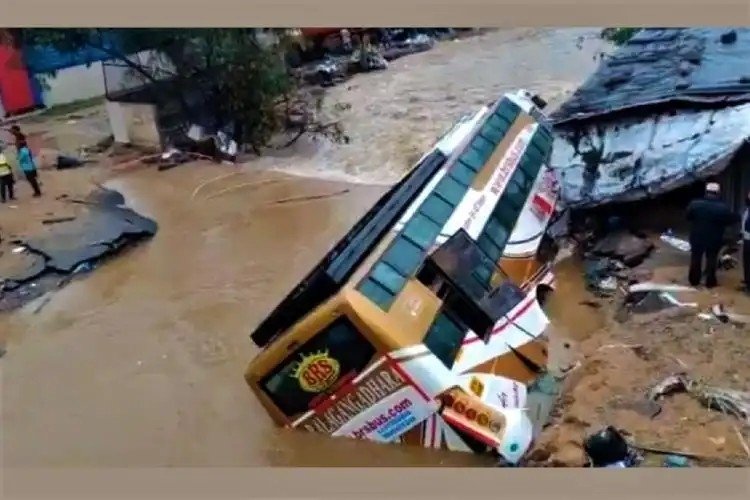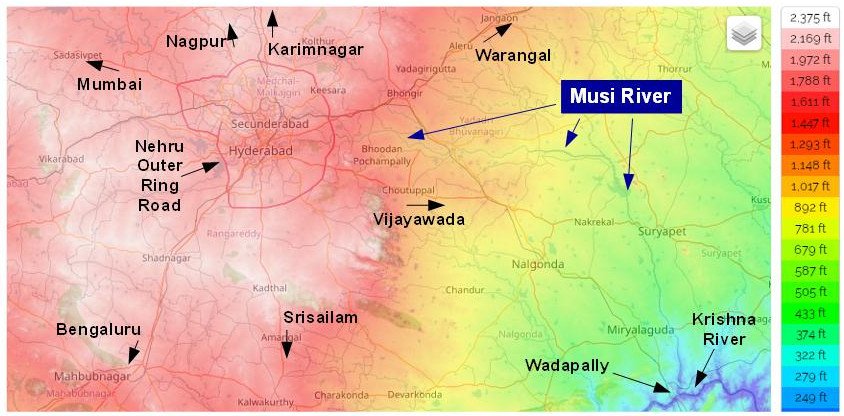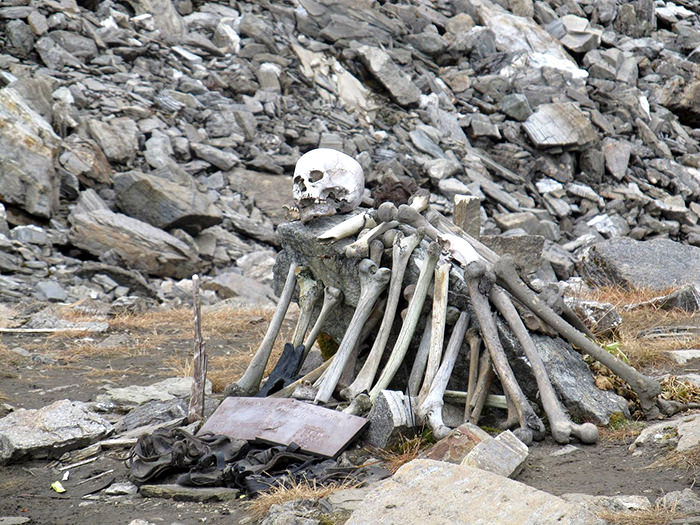
1/21
Thread on a most historic land reform:
The Princely State of Hyderabad had an area of over 2,10,000 sq km in 1948, when Operation Polo merged it with India.
(This is double the area of England, and only a bit less than the area of today's UP).
Thread on a most historic land reform:
The Princely State of Hyderabad had an area of over 2,10,000 sq km in 1948, when Operation Polo merged it with India.
(This is double the area of England, and only a bit less than the area of today's UP).
2/21
In 1948, about 10% of this land – more than 20,000 sq km - was directly owned by one person.
The 7th Nizam of Hyderabad, Mir Osman Ali.
The lands directly owned by Nizam were called Sarf-e-Khas lands.
In 1948, about 10% of this land – more than 20,000 sq km - was directly owned by one person.
The 7th Nizam of Hyderabad, Mir Osman Ali.
The lands directly owned by Nizam were called Sarf-e-Khas lands.
3/21
Another 30% of the land was in the hands of about 1100 "jagirdars".
Unlike "zamindars" in the rest of India however, "jagirdars" in Hyderabad were only allowed to occupy land and collect land revenue.
They did not own jagir lands, which, ultimately, belonged to the Nizam.
Another 30% of the land was in the hands of about 1100 "jagirdars".
Unlike "zamindars" in the rest of India however, "jagirdars" in Hyderabad were only allowed to occupy land and collect land revenue.
They did not own jagir lands, which, ultimately, belonged to the Nizam.
4/21
The largest category of jagir lands were the “Paigah” jagirs.
The original “Paigah” was Abdul Khair Khan, who was granted a jagir by the 2nd Nizam, Ali Khan, for maintaining mounted troops for Nizam's household.
Hence “Paigah” - which means “stables”.
The largest category of jagir lands were the “Paigah” jagirs.
The original “Paigah” was Abdul Khair Khan, who was granted a jagir by the 2nd Nizam, Ali Khan, for maintaining mounted troops for Nizam's household.
Hence “Paigah” - which means “stables”.
5/21
By 1948 there were three descendant branches of the original Paigah grantee's family.
These were the Paigahs of Asman Jah, Khurshid Jah and Viqar-ul-Umra families, who together controlled almost 9,000 sq km of jagir lands.
By 1948 there were three descendant branches of the original Paigah grantee's family.
These were the Paigahs of Asman Jah, Khurshid Jah and Viqar-ul-Umra families, who together controlled almost 9,000 sq km of jagir lands.
6/21
There were several other types of jagirs in vogue.
Some were hereditary, others were not.
Some were granted for performance of specific services while some were granted as “Inams” to maintain the “Inamdar's” family. There were almost 83,000 Inamdars in the entire state!
There were several other types of jagirs in vogue.
Some were hereditary, others were not.
Some were granted for performance of specific services while some were granted as “Inams” to maintain the “Inamdar's” family. There were almost 83,000 Inamdars in the entire state!
7/21
There were also 14 “Samsthans”, under the control of “Rajahs”.
They maintained troops, which were available to the Nizam when needed. They also paid tribute to the Nizam.
Prominent “Samasthans” included Gadwal, Wanaparthy, etc.
There were also 14 “Samsthans”, under the control of “Rajahs”.
They maintained troops, which were available to the Nizam when needed. They also paid tribute to the Nizam.
Prominent “Samasthans” included Gadwal, Wanaparthy, etc.
8/21
Some of the land owning aristocracy were allowed criminal justice powers.
Repression of “ryots” (farmers) who actually cultivated land was common. “Vetti” (forced labour), slave labour and exploitation of women were common.
Trade was controlled by select communities.
Some of the land owning aristocracy were allowed criminal justice powers.
Repression of “ryots” (farmers) who actually cultivated land was common. “Vetti” (forced labour), slave labour and exploitation of women were common.
Trade was controlled by select communities.
9/21
Protests against this system began in 1920s with the formation of Andhra Mahasabha (AMS). They gathered steam when AMS was taken over by young activists in 1930s.
2nd World War led to food shortages and increased repression.
All this increased communist influence in AMS.
Protests against this system began in 1920s with the formation of Andhra Mahasabha (AMS). They gathered steam when AMS was taken over by young activists in 1930s.
2nd World War led to food shortages and increased repression.
All this increased communist influence in AMS.
10/21
The situation was volatile.
A spark came in 1946 when a “sangham” (farmer's group) leader Doddi Komarayya was killed, and several others injured, due to firing by landlord Vishnu Deshmukh's goons in Warangal district.
The situation was volatile.
A spark came in 1946 when a “sangham” (farmer's group) leader Doddi Komarayya was killed, and several others injured, due to firing by landlord Vishnu Deshmukh's goons in Warangal district.
11/21
The angry farmers set fire to Deshmukh's house before they were dispersed by police.
Despite assurances of investigation by police, the goons were released and cases filed against the farmers. This led to a spontaneous “Peasant's Revolt” by farmers against land owners.
The angry farmers set fire to Deshmukh's house before they were dispersed by police.
Despite assurances of investigation by police, the goons were released and cases filed against the farmers. This led to a spontaneous “Peasant's Revolt” by farmers against land owners.
12/21
Land was seized by farmers and redistributed among themselves. Almost 350 villages in Nalgonda, Khammam and Warangal came under farmer control.
Politically, the AMS, Communists and Congress came together in a broad anti repression front.
Land was seized by farmers and redistributed among themselves. Almost 350 villages in Nalgonda, Khammam and Warangal came under farmer control.
Politically, the AMS, Communists and Congress came together in a broad anti repression front.
13/21
In 1947 India became independent. But Nizam refused to join India.
“Razakar” paramilitary stormtroopers under Qasim Razvi vowed to keep Hyderabad independent under the Nizam. They saw the peasant revolt as a challenge to Nizam and tried to suppress it by violent force.
In 1947 India became independent. But Nizam refused to join India.
“Razakar” paramilitary stormtroopers under Qasim Razvi vowed to keep Hyderabad independent under the Nizam. They saw the peasant revolt as a challenge to Nizam and tried to suppress it by violent force.
14/21
Rajahs and other aristocracy also tried to suppress the revolt. But the revolt grew stronger.
Meanwhile, in Sept 1948, tired of Nizam's tactics and Razakar atrocities, India sent its Army under Gen J N Chaudhury to force matters. Almost immediately Hyderabad surrendered.
Rajahs and other aristocracy also tried to suppress the revolt. But the revolt grew stronger.
Meanwhile, in Sept 1948, tired of Nizam's tactics and Razakar atrocities, India sent its Army under Gen J N Chaudhury to force matters. Almost immediately Hyderabad surrendered.
15/21
Under V P Menon, Secretary to the Ministry of States, Govt of India tried to tackle the peasant revolt by going after the Communists.
But while force could got some results, the root cause of the revolt – land related oppression – had to be tackled.
Under V P Menon, Secretary to the Ministry of States, Govt of India tried to tackle the peasant revolt by going after the Communists.
But while force could got some results, the root cause of the revolt – land related oppression – had to be tackled.
16/21
Immediately, as a measure of land reform, Menon instructed Gen Chaudhury (who was military administrator of Hyderabad after Operation Polo) to convince the Nizam to hand over his lands to the State and agree to abolition of jagirs.
Immediately, as a measure of land reform, Menon instructed Gen Chaudhury (who was military administrator of Hyderabad after Operation Polo) to convince the Nizam to hand over his lands to the State and agree to abolition of jagirs.
17/21
As compensation for surrendering his holdings, Nizam was promised a Privy Purse of over a crore of rupees every year, and several other benefits.
Several meetings were held between Chaudhuri and the Nizam, correspondence exchanged, and threats, cajoling, counselling used.
As compensation for surrendering his holdings, Nizam was promised a Privy Purse of over a crore of rupees every year, and several other benefits.
Several meetings were held between Chaudhuri and the Nizam, correspondence exchanged, and threats, cajoling, counselling used.
18/21
Gen Chaudhuri's reports on these “negotiations” are available in the National Archives of India and make for fascinating reading.
Ultimately, he was able to convince the initially reluctant Nizam to agree.
Gen Chaudhuri's reports on these “negotiations” are available in the National Archives of India and make for fascinating reading.
Ultimately, he was able to convince the initially reluctant Nizam to agree.
19/21
The Hyderabad Sarf-e-khas (Merger) Regulations and Hyderabad (Jagirs) Abolition Regulation of 1358F (1949) merged the over 80,000 sq km of lands controlled by the aristocracy with “Diwani” (State Government) lands, giving state the ownership of almost 70% of the land.
The Hyderabad Sarf-e-khas (Merger) Regulations and Hyderabad (Jagirs) Abolition Regulation of 1358F (1949) merged the over 80,000 sq km of lands controlled by the aristocracy with “Diwani” (State Government) lands, giving state the ownership of almost 70% of the land.
20/21
This was perhaps the single largest land reform in independent India.
It led to the end of the peasant revolt, more equitable land ownership pattern, higher revenues for government, and progress towards achieving Constitutional goals.
All involved deserve credit.
This was perhaps the single largest land reform in independent India.
It led to the end of the peasant revolt, more equitable land ownership pattern, higher revenues for government, and progress towards achieving Constitutional goals.
All involved deserve credit.
21/21
References:
Report of the Land Revenue Reforms Committee 1958-1959 by K N Ananta Raman
archive.org/stream/dli.csl…
Matter relating to the Administration, Revenue, etc. of the Sarf-i-Khas areas of the Nizam (National Archives of India)
abhilekh-patal.in/jspui/handle/1…
References:
Report of the Land Revenue Reforms Committee 1958-1959 by K N Ananta Raman
archive.org/stream/dli.csl…
Matter relating to the Administration, Revenue, etc. of the Sarf-i-Khas areas of the Nizam (National Archives of India)
abhilekh-patal.in/jspui/handle/1…
@threadreaderapp unroll
• • •
Missing some Tweet in this thread? You can try to
force a refresh












